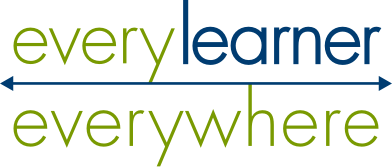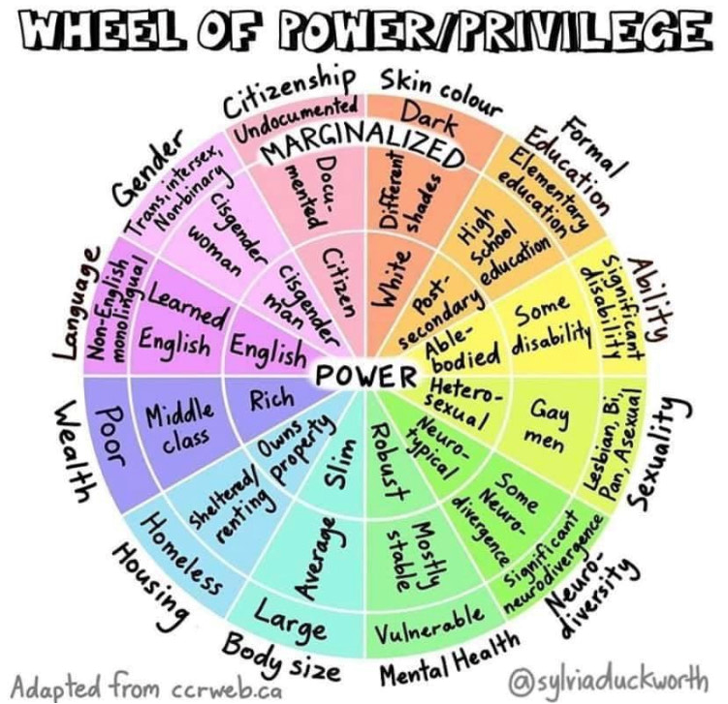When a college instructor works with their students — on campus or online — they may see a range of visible identities such as gender or race. However, each student (and every person) encompasses multiple identities, and how those identities intersect can create very different individual experiences. Equity in the classroom depends on making room for multiple identities.
An intersectional analysis considers how those multiple identities and experiences converge and interact in order to unveil the ways systems of privilege, power, and oppression affect individuals within broad groups. Intersectional pedagogy builds on intersectional analysis by developing teaching practices that recognize how multiple identities and experiences converge and interact for individual students.
What is intersectional pedagogy?
Intersectional pedagogy comes from earlier work in legal studies and the social sciences. The term intersectionality was coined by legal scholar and UCLA law professor Kimberlé W. Crenshaw. The premise of intersectionality is that people live layered identities as members of multiple communities, which create unique and complex experiences of oppression and privilege.
Intersectional pedagogy examines the experiences of students in a way that moves beyond a single axis and views them as an intersection of their race, ethnicity, class, ability, gender, and lived experiences. Intersectional pedagogy asks educators to understand that identities and experiences compound on one another and to take those identities and experiences into consideration when developing curricula and in their teaching practices.
As Crenshaw says in her talk at TEDWomen 2016, The Urgency of Intersectionality, “Without frames that allow us to see how social problems impact all the members of a targeted group, many will fall through the cracks of our movements, left to suffer in virtual isolation.”
Understanding student identities
Along with race, ethnicity, gender, class, and ability, other identities to take into consideration include age, language, religion, mental health, body size, marital status, and parental status.
Experiences that also converge and interact with identity can include color prejudice, lookism or beauty bias, immigration status, family obligations, incarceration history, housing status, and military experience.
Some of these — such as race or age — may seem to be visible, though never reliably so. Others, such traumatic experiences, or a history of systemic educational inequity are less readily apparent.
Intersectional pedagogy also means remembering that students who outwardly appear to share the same identities may have different experiences depending on the context. A female student in a classroom with a majority of other women will not have the same experience when the ratio of men to women is higher. An international student in San Francisco won’t have the same experience as an international student in rural Montana.
Another powerful example is shared by Eeman Uddin, one of Every Learner Everywhere’s student Fellows. As she writes, the world’s 1.8 billion Muslims include “a wide variety of cultures, ethnicities, races, and abilities that intersect with their religious identity in countless ways.” The visible signs of her faith suggest only part of her identity.
Using intersectional pedagogy to promote equity in the classroom
Equity in the classroom isn’t a matter of treating all students the same regardless of identity. In fact, pedagogy that doesn’t “see” race, gender, or other identities can have the opposite effect of leaving students out because of their intersectional identities.
In an essay for Learning for Justice, Duke University student Maryam Asenuga writes, “As educators, you can either empower or oppress students by the way you choose to teach and see them. Your intentional decisions to incorporate some communities and identities into the classroom while leaving others out show which side you choose.”
Intersectional pedagogy can help create a more equitable classroom.
1. Acknowledge students’ intersecting identities
Start by educating yourself about the different identities present in your students and how those might affect their experiences. Using an activity such as the Social Identity Wheel from the University of Michigan can help you become aware of the different layers of identity in your students so you can better support them.
Acknowledging intersectional identities also invites students to bring their whole selves to the classroom, and tells minoritized students that who they are matters. It can also spark critical thinking about privilege in students whose identities are not marginalized.
Learn more: How Equity-Centered Design Supports Anti-Racism in the Classroom
2. Include your students’ cultural experiences in all aspects of learning
Examine your curriculum to see what voices are represented, and find places to expand the diversity. Students are more likely to engage when they see their own identities reflected in the reading assignments, examples, and imagery.
As Dr. Kristal Moore Clemons, director of CDF Freedom Schools and Every Learner Everywhere Expert Network consultant, says in this interview, including your students’ cultural experiences isn’t just about checking boxes. It’s a way to deepen your connection with your students.
Learn more: Curricula that Account for All Students: A Look at Culturally Responsive Teaching in Higher Ed
3. Design online and in-person classrooms with a range of identities in mind
Along with rethinking curriculum, take a look at course design and policies to ensure they account for the identities and experiences of every student.
For example, what tools are students required to use to access online course materials, and how might their intersectional identities affect their ability to use those tools? How might class policies about due dates and test attempts affect students of different identities? Are the textbooks, materials, and other class resources you’ve chosen accessible to every student and supportive of a range of cultural norms?
Intersectional pedagogy promotes equity
The Duke University Office of Teaching and Learning has collected studies on the benefits of intersectional pedagogy, including increases in:
- awareness and acknowledgement of white privilege and of blatant racism;
- positive attitudes about Muslim women; and
- openness to awareness of “out groups.”
Intersectional pedagogy encourages students to bring their whole selves to the classroom, better supports minoritized students, removes barriers to equity in the classroom, creates safer learning environments, and nurtures a richer learning experience for every student.
Download Optimizing High-Quality Digital Learning Experiences: A Playbook for Faculty



